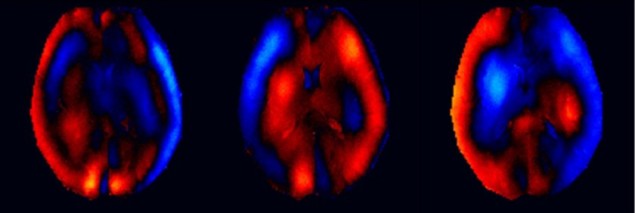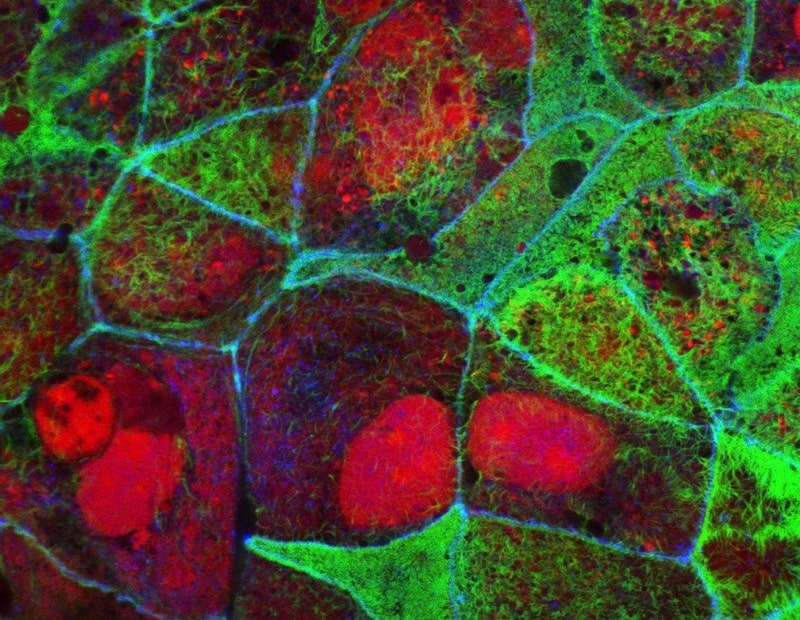Brain tumours spread by exploiting fundamental physics
New research in Germany shows that changes to the mechanical properties of cells can cause a brain tumour to become malignant. Josef Käs of the University of Leipzig and Ingolf Sack of the Charité-Universitätsmedizin Berlin and colleagues have shown that a brain tumour is a unique material and its spread is driven by physics as well as biomechanics. Using research conducted on tumours in living patients, they suggest that small changes to the elasticity of cells produce collective effects that impact the prognosis of a tumour.
Sack and Käs are a chemist and a physicist respectively, each researching cancer, on two very different scales. Sack studies the mechanical properties of tissues in living patients. He has pioneered the use of low frequency vibrations combined with magnetic resonance imaging (MRI) to measure the progression of diseases such as cancer. This technique is called magnetic resonance elastography (MRE). Käs is one of the inventors of the optical stretcher, which was also used in this study. An optical stretcher is an optical trap that uses two laser beams to deform single cells and measure their viscoelastic properties.
In 2019, Sack and Käs discovered, using MRE, that glioblastoma, the deadliest form of brain cancer, is softer and less viscous than a benign brain tumour. Glioblastomas are almost impossible to remove because they grow by spreading tiny “fingers” into the surrounding tissue. The researchers realized that this growth could be driven by pure physics because “viscous fingers” are a well-known effect that arises when a low viscosity liquid is injected into another fluid.
 Measuring mechanical properties: a patient undergoing magnetic resonance elastography. (Courtesy: Ingolf Sack)
Measuring mechanical properties: a patient undergoing magnetic resonance elastography. (Courtesy: Ingolf Sack)Armed with this theory about how glioblastomas spread, the researchers set out to understand why. This meant looking at single cells, for which Käs’s group in Leipzig used the optical stretcher. The researchers recruited eight patients, four with benign brain tumours and four with malignant brain tumours, three of which were glioblastomas. The patients underwent MRE to measure the mechanical properties of their tumours, alongside measurement of individual tumour cells performed with an optical stretcher.
They had no expectations for what they would find, but Käs says that “the surprising thing is that single cell mechanical properties are still reflected in the whole brain tumour”. However, their data shows a more complex picture than viscous cells producing more viscous tumours.
Collaboration allows tumour cells to invade
Consistent with their previous results, the malignant tumours were softer and less viscous than the benign tumours, but puzzlingly, they did not have cells that were less viscous . Instead, it was the stretchiness and elasticity of the cells that was correlated with the fluidity of the tissue. For a tumour to “flow” into the surrounding tissue, the cells must squeeze past each other, and the researchers believe that this makes elasticity, rather than viscosity, the mediator of tissue fluidity.
They also observed that the tumour cells had a much wider range of mechanical properties than would be expected in a healthy sample. This is consistent with what is known about cancer, which breaks down regulation processes in cells. Drawing on the models of other researchers, they theorize that this heterogeneity allows parts of the tumour to fluidize and spread, whilst a rigid backbone of hard cells prevents it dispersing.
Describing the unique properties of malignant tumours, Käs says, “They don’t have to make a genetic change to start viscous fingering. It’s simply that they have these broad mechanical properties, which basically fluidizes, unjams the cells. And with unjamming, the viscous fingering that comes along means the most invasive growth you can imagine.”
Whilst the sample was small, this research indicates the importance of physics in cancer progression. Käs is aware that their conclusions are mixed news from a therapeutic perspective. This is because physics is more difficult to disrupt than a molecular change. But if physics can make a tumour malignant, it can also make it benign, and understanding this would be an important step in the treatment of this disease.
The research is described in Soft Matter.

Katherine Skipper is a PhD student contributor to Physics World. Katherine is based at the University of Bristol, where she studies experimental active matter. Find out more about our student contributor networks
from physicsworld.com 17/12/2021


Δεν υπάρχουν σχόλια:
Δημοσίευση σχολίου